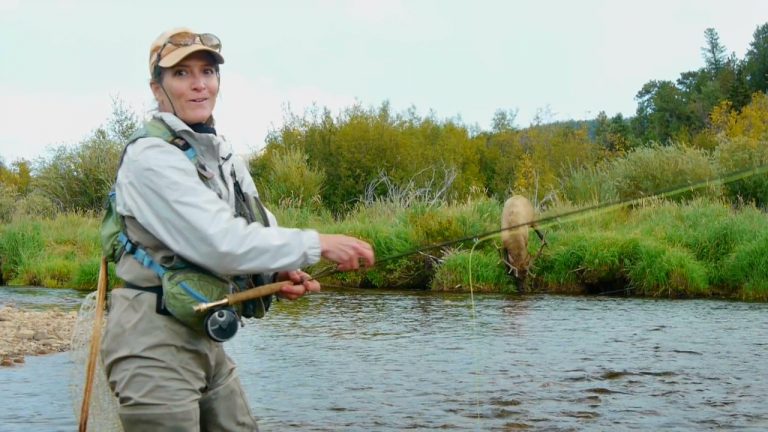Fly fishing should be done with good ergonomics and safety preparedness. Fly fishing can be fun. Particularly when fishing for trout, trout live in beautiful places. When fly fishing you can be immersed in nature. You may see hummingbirds hover over the river eating insects, you may see bear scat on the hike in and periodically look over your shoulder to be sure the bear is not nearby. You may observe drinking from the same water you are standing in.
There is joy with fly fishing, but also manageable risks. Below are some risks and solutions.
Fly fishing Risks:
- Repetitive motion with upper extremity
- Forceful, incorrect casting techniques
- Wading in water on slippery and uneven surfaces
- Dehydration
- Exposure to the elements and inclement weather
- Getting injured in a remote location.
Solutions:
- Be fit for the sport. Strengthening your arms, core and legs will help prepare your body for a day of fishing. Dynamic warm-ups prior can also reduce soreness.
- Use proper tools. Let your fly rod do the work. Learn to cast properly so your shoulder can stay relaxed as the rod and fly line move the fly.
- Learn how to read water and wear polarized sunglasses. Polarized lenses are important not only for seeing your fly but for safety when wading. Having a strong core will help with your balance while wading. Wearing proper wading boots will help with the slippery rocks.
- Carry plenty of food and water when in nature. It is a good idea to also have a filter to refill your water supplies. It is not a good idea to drink from a stream without filtering first. As we say in the mountains, Giardia won’t kill you but you will wish you were dead.
- Always have a rain jacket and layers to stay warm in the event of rapid temperature changes. One rainstorm can drop the temperature by 20-30 degrees Fahrenheit.
- Carry a GPS location emergency communication device. Something as simple as a broken ankle and you are unable to hike out. With a GPS emergency beacon search and rescue will know your exact location. Many devices allow for texting to tell emergency responders your situation. You will get help faster and search and rescue will have an easier task for locating you. Some devices can help you return to the start with mapping services should you get lost.
- Always be prepared to stay overnight. One never knows what may happen. If you have proper supplies an incident will have much better outcomes.
- Always tell someone your plan for the day.
Tight Lines.


